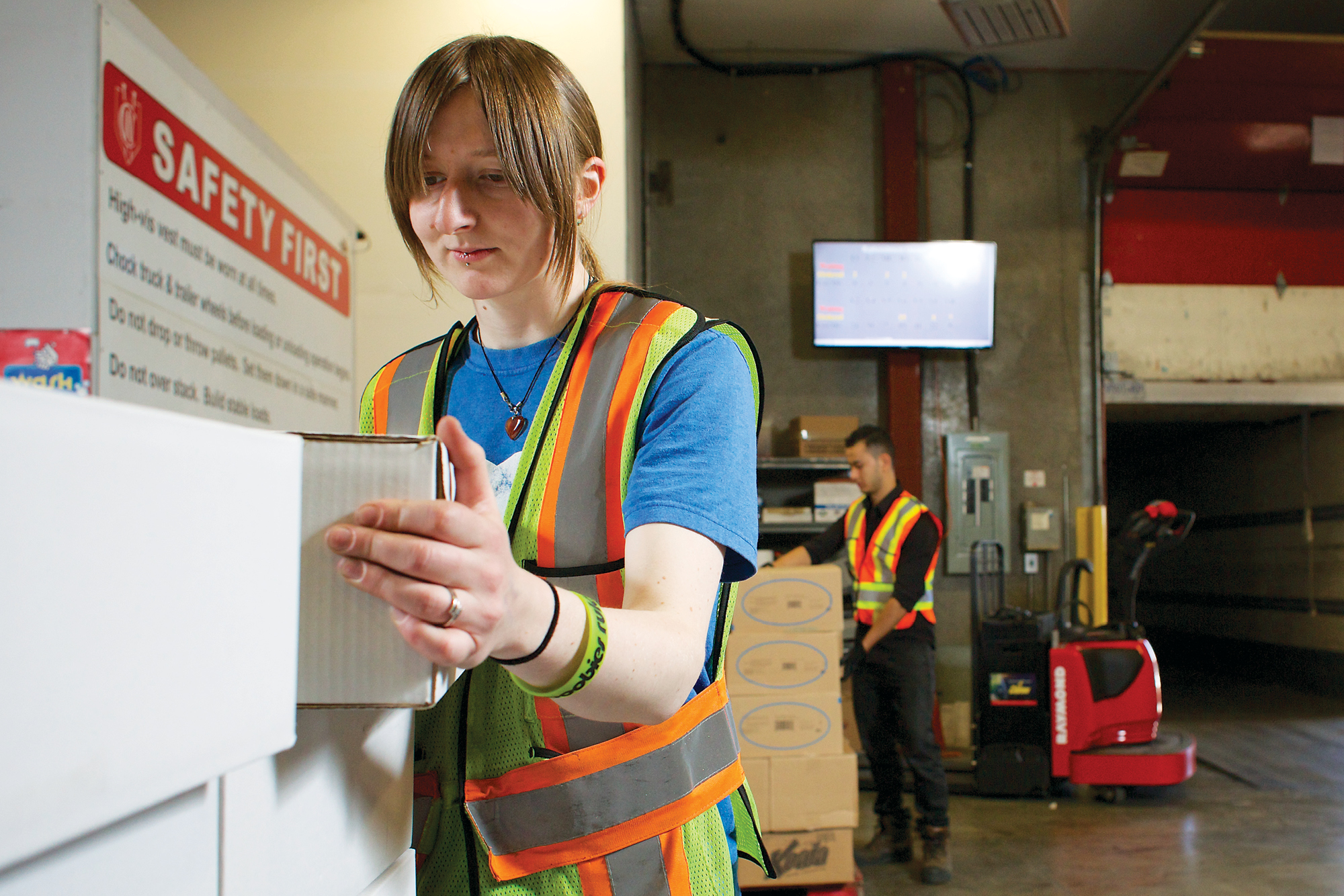Suitable work after an injury at work helps support recovery.

Photo credit: © WorkSafeBC (Workers’ Compensation Board of B.C.), used with permission
Modified duties, or work accommodations, are temporary job changes offered to workers recovering from a workplace injury. This work can vary greatly depending on the industry, type of workplace, and physical and psychological abilities of the worker. No matter the industry, modified duties are an individualized approach for offering recovery and rehabilitation opportunities that allow workers to stay connected to their workplace.
On January 1, 2024, amendments to the Workers Compensation Act under Bill 41 came into effect, outlining the “duty to cooperate” that requires employers and workers to work together to find suitable work that allows them to stay or recover at work.
Studies show that staying active often helps promote recovery and reduces the chance of re-injury, which is why remaining at work — or returning to work as soon as it’s safe to do so — is one of the best ways employers can support their workers in their recovery.
Colleen Skinner and Heather Miller, return-to-work specialists and nurses on the Return to Work Consultation and Education Services Team at WorkSafeBC, note “Workers need to understand that they’re being asked to do work that adds value to the workplace and that they’re capable of doing. Ensuring a worker feels included in the planning process, and that they have a voice in communicating what tasks they feel comfortable doing helps them to feel respected and a part of the decision; even when the accommodation offered might not be their first choice.” Heather adds that offering modified duties at the time of injury is meant to be a temporary solution to keep them integrated in the workplace until they can return to their regular pre-injury duties.
Collaborate on ways to safely contribute
So how can employers work with injured workers to identify modified work opportunities? It all starts with a conversation.
“Employers need to listen first, then collaborate with the worker to find suitable modified duties,” says Colleen. While some workers are ready to return to work right away; others may need more time. But for most, being connected to their workplace and having a supervisor who reaches out to understand how they are doing is something many look forward to.
Conversations about modified duties should happen as soon as possible, and depending on the nature of the injury, don’t require a doctor’s note to return to work. You also don’t have to wait for WorkSafeBC to accept the claim before offering modified work. If the work accommodation is within the worker’s functional abilities, then modified work can be offered and started.
“The sooner suitable work is identified and begun, the better is it for the worker in the long run,” says Colleen. “It allows the worker to continue to contribute to their workplace while they recover and can ease any financial concerns while they wait for their claim to be accepted.”
Outside-the-box thinking
There are many ways employers and workers can work together to identify suitable work. The key is to remember that solutions are not one-size-fits-all and can sometimes require out-of-the-box thinking.
“It might not be the job they were hired to do, but if they’re capable of doing the work, then it’s worth exploring,” says Heather.
Some strategies to consider include:
- Temporarily modifying their pre-injury job
- Identifying other work opportunities that aren’t part of their pre-injury job
- Temporarily modifying their days and/or hours of work
- Changing the sequence of activities they must do to perform their job
- Making physical changes to the work area (e.g., providing a stool to elevate an injured leg)
- Removing or reorganizing tasks
- Providing special tools or equipment to assist with tasks
- Allowing for stretch breaks and rest periods
Modified work success stories
George Forgie and Gilda Adamson have first-hand experience of the benefits of returning to work as soon as it is safe to do so after an injury. In working with their employers, they both identified suitable, modified work that allowed them to perform some duties while they recovered — keeping them connected to their workplace and protecting their income and employment benefits.
Their return-to-work success stories are an example of how this collaborative approach is a win-win for workers and employers — minimizing the disruptive impact of workplace injury, while supporting the physical and mental recovery for workers. Working through their rehabilitation also allowed them to maintain their skill set and boosted their morale, which ultimately helped with their recovery process.
You can read more about their success stories on worksafebc.com (George’s story, Gilda’s story).
Find out more
Learn more about the new return-to-work responsibilities and requirements on worksafebc.com:
- Return to Work Consultation & Education Services Support Line
- Return-to-work information for employers’ home page
- Employer fact sheet: Duty to cooperate
- Employer fact sheet: Duty to maintain employment
- Bill 41 Employer Info Session recording and Q&A
Stay tuned for more blog posts focusing on return-to-work and learn more about how you can support your injured workers in their safe and timely return to work at worksafebc.com/returntowork.


